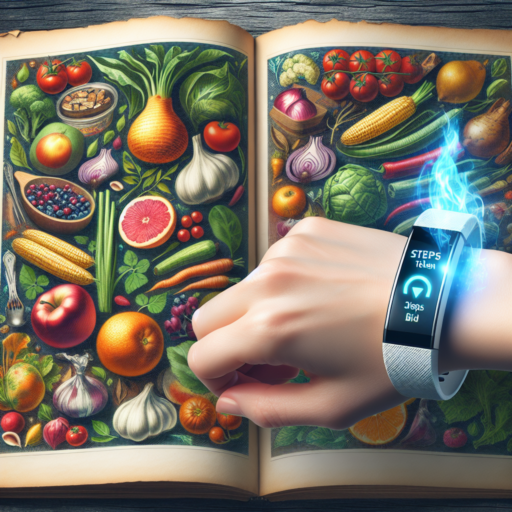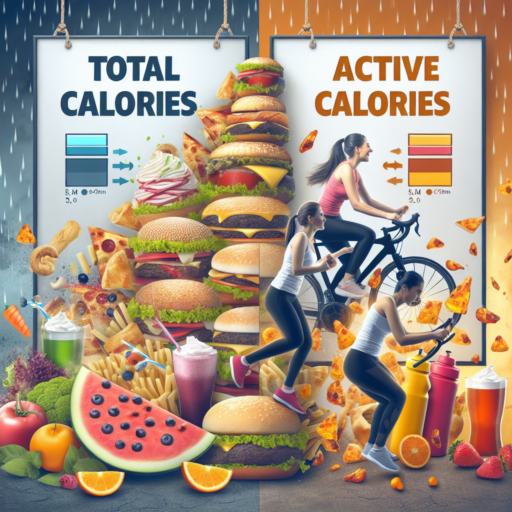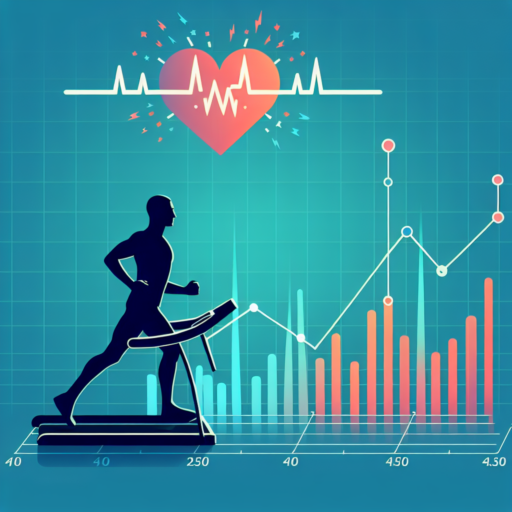Understanding the Basics of Tracking Calories Burned
Tracking calories burned is a fundamental aspect of any fitness journey, offering insights into the effectiveness of your workout routines and helping you meet your fitness goals. At its core, understanding this process involves recognizing the various factors that influence calorie expenditure, including physical activity intensity, duration, and the individual’s unique physiological characteristics.
Key Factors Influencing Calorie Burn
Several key factors play a critical role in how many calories you burn during physical activities. First and foremost, the intensity of the activity significantly affects calorie expenditure. High-intensity exercises like running or interval training can burn more calories than activities like walking. Additionally, the duration of the activity is directly proportional to the total calories burned. Longer exercise sessions typically result in greater calorie expenditure. Lastly, individual characteristics such as age, gender, weight, and muscle mass also influence the total number of calories burned, making personalized tracking essential for accuracy.
Techniques for Measuring Calories Burned
Accurately measuring the calories burned during exercise and daily activities can be challenging, but several techniques can help. Wearable fitness trackers and smartwatches are among the most popular and convenient tools for monitoring calorie burn, offering real-time data and insights. Besides technology, methodologies like the metabolic equivalent of task (MET) values provide estimates for calories burned for various activities, considering the intensity and duration of exercises. However, it’s important to remember that all methods have their limitations and should be used as part of a broader approach to health and fitness.
Remember, knowing how many calories you burn during different activities can be a powerful tool in managing your fitness. By understanding and accurately tracking these metrics, you can tailor your workout and nutrition plans to better meet your health and fitness goals, making each step of your journey more informed and effective.
The Best Tools and Apps for Tracking Your Calories Burned
Keeping track of calories burned throughout the day is crucial for anyone looking to maintain, lose, or gain weight in a healthy manner. With numerous tools and apps available, it can be overwhelming to choose the right one that fits your lifestyle and fitness goals. Below, we delve into some of the most effective and user-friendly tools and apps designed to help you monitor your caloric burn accurately.
MyFitnessPal: A Comprehensive Calorie Tracking App
MyFitnessPal stands out for its comprehensive database that not only tracks calories burned through various physical activities but also monitors your food intake. This dual functionality makes it an invaluable tool for anyone serious about achieving their fitness goals. Its user-friendly interface, paired with the ability to scan barcodes for food tracking, ensures a seamless experience for users of all levels.
Fitbit: Your Fitness Partner On The Go
Fitbit is more than just a wearable device; it’s a comprehensive fitness tracker that monitors steps, heart rate, and caloric burn. Whether you’re running, cycling, or swimming, Fitbit provides detailed reports on your activity levels, making it easier to understand how your exercise is contributing to your calorie deficit. Syncing seamlessly with its smartphone application, Fitbit allows for real-time tracking and goal setting, offering a motivational boost by sharing milestones and achievements.
Finding the right tool or app to track your calories burned is essential for anyone looking to optimize their fitness routine. Whether you prefer a comprehensive platform like MyFitnessPal or the convenience of wearable tech like Fitbit, there’s a solution out there to meet your needs. Understanding and monitoring your caloric burn effectively can significantly enhance your fitness journey, helping you to achieve and maintain your health goals with greater precision.
How Accurate Are Calorie Burn Trackers?
Exploring the accuracy of calorie burn trackers reveals a complex landscape, intertwined with various factors that impact their precision. These devices, ranging from smartwatches to fitness bands, rely on algorithms and sensors to estimate the energy you expend. However, the question arises: how close do these estimates come to the real numbers?
Firstly, the accuracy of calorie burn trackers can significantly vary depending on the brand and the model. High-end devices often incorporate advanced sensors and algorithms that can more accurately measure heart rate, steps, and even sleep quality, which are critical for calculating calorie expenditure. Nonetheless, discrepancies still exist even among the top contenders in the market. The type of activity also plays a crucial role in determining how precise these gadgets are. For instance, activities with erratic movements or varying intensities can confuse the trackers, leading to less accurate readings.
Factors Influencing the Accuracy of Calorie Calculation
- User-specific data input – The accuracy is partially dependent on the correctness of the information the user inputs, such as weight, height, and age.
- Type of sensors used – Devices with more sophisticated sensors, like those capable of measuring heart rate variability, tend to offer more precise calorie burn data.
- Algorithm sophistication – The algorithm’s ability to accurately interpret sensor data and adjust calculations based on user feedback also greatly affects its precision.
Integrating Calorie Burn Tracking into Your Fitness Routine
Integrating calorie burn tracking into your fitness routine can substantially enhance your workout results and overall health. By understanding how many calories you’re expending during each exercise session, you can tailor your fitness regimen to better suit your weight loss or weight maintenance goals.
One of the primary benefits of tracking calorie burn is the ability to fine-tune your workout strategy. For instance, if your objective is weight loss, understanding the caloric expense of different activities can help you prioritize exercises that maximize calorie burn. This might include high-intensity interval training (HIIT), cycling, or swimming. Conversely, if you’re more focused on endurance or strength building, knowing how many calories you’re burning can assist in ensuring you’re consuming enough to support muscle growth and recovery.
Moreover, incorporating calorie burn tracking into your fitness routine can provide motivational boosts. Setting and achieving calorie burn goals can be incredibly satisfying, serving as a tangible measure of your efforts and progress. Additionally, this process can encourage consistency in your exercise habits, as it adds an element of accountability.
To effectively integrate calorie burn tracking, consider utilizing fitness trackers or smartwatches that offer this feature. These devices often provide the most accurate estimates of calories burned, taking into account your heart rate, the intensity of the workout, and the duration. Furthermore, many of these gadgets come with companion apps that allow you to analyze your performance over time, offering insights that can help refine your fitness strategy even further.
In conclusion, incorporating calorie burn tracking into your routine is a strategic approach to achieving your fitness goals. By understanding and responding to this data, you can optimize your workouts, stay motivated, and monitor progress in a quantitative manner.
The Relationship Between Burning Calories and Weight Loss
Understanding the interplay between burning calories and weight loss is crucial for anyone looking to shed pounds in a healthy manner. At its core, weight loss occurs when the body expends more calories than it consumes. This calorie deficit forces the body to tap into stored fat reserves for energy, leading to weight loss. However, the mechanics of caloric expenditure and its impact on weight loss are influenced by various factors including metabolism, physical activity level, and the thermic effect of food.
Metabolic Rate plays a key role in how efficiently our bodies burn calories. A higher metabolism means the body burns calories at a quicker rate, even while at rest. Incorporating strength training into an exercise regimen can boost metabolic rate by increasing lean muscle mass, which in turn enhances the calorie-burning process. Nutrition also plays a part; eating foods high in protein can slightly increase the body’s metabolic rate due to the thermic effect of food.
Engaging in Physical Activity is arguably the most direct method to burn calories and foster weight loss. Cardiovascular exercises such as running, biking, and swimming are especially effective as they increase heart rate and burn a significant amount of calories. Moreover, combining aerobic activities with strength training can maximize fat loss while preserving muscle mass, leading to a more toned physique and an increased calorie burn even when inactive.
No se han encontrado productos.
Maximizing Your Workouts: Tips to Burn More Calories
When it comes to enhancing the efficiency of your workout routine, understanding how to maximize calorie burn can transform your approach to fitness. Several strategies can elevate your workout’s effectiveness, allowing you to achieve your goals faster. Incorporating these tips could be the game-changer you’ve been looking for in your fitness journey.
Intensify Your Workouts
Incorporating high-intensity interval training (HIIT) into your exercise regimen is a proven way to significantly increase the amount of calories you burn. This method alternates between short bursts of intense activity and brief recovery periods, keeping your heart rate up and pushing your body to burn more fat in less time. Adding HIIT sessions a few times a week can enhance your metabolic rate and improve overall fitness levels.
Incorporate Strength Training
While cardio exercises are effective for burning calories, strength training is essential for building muscle, which in turn boosts your resting metabolic rate. More muscle means your body burns more calories, even when at rest. Integrating weight lifting or bodyweight exercises into your routine not only helps in maximizing calorie burn but also strengthens your bones, improves posture, and increases endurance.
Focusing on compound movements such as squats, deadlifts, and bench presses can engage multiple muscle groups, leading to a higher calorie burn during and after your workout. Remember, the key to elevating your calorie expenditure is to challenge your body consistently. By applying these strategies, you can make each workout session more efficient and closer to your fitness targets.
How to Estimate Calories Burned in Common Exercises
Estimating the number of calories burned during common exercises can seem challenging, but with some basic understanding and tools, it’s quite manageable. Whether you’re walking, running, cycling, or engaging in strength training, several factors determine how many calories you burn, including your weight, age, sex, and the intensity of the workout.
Understanding METs in Exercise
One method to estimate calories burned is through the Metabolic Equivalent of Task (MET). A MET is a unit that represents the amount of oxygen consumed while sitting at rest; it’s the basis for comparing the energy cost of various activities. For instance, an activity that burns five times as much energy per minute as sitting quietly has a MET value of 5. Knowing the MET value of an exercise, along with your weight, can help you accurately calculate the calories burned. Many fitness organizations and health websites offer MET values for a wide range of exercises.
Using Online Calculators and Apps
For those looking for a more straightforward approach, numerous online calculators and smartphone apps can estimate calories burned without the need for manual calculations. These tools typically require you to input specifics about the exercise performed, duration, and your personal details (like weight and age). While they might not be 100% accurate due to variations in individual metabolism and exact effort levels, they provide a reasonable estimate that can help in managing your fitness goals.
Note: Regardless of the method used to estimate calories burned, it’s vital to understand that these figures are approximations. Individual differences in metabolism, muscle mass, and body composition mean that the actual calories burned can vary significantly from one person to another. Hence, while these estimations are useful for setting and tracking fitness goals, they should be viewed as part of a broader approach to health and fitness.
The Science Behind Measuring Calories Burned
Understanding how calories are burned and measured is a fascinating journey into the realm of biology and technology. At its core, the process involves the complex interplay between our body’s metabolic activities and the various factors influencing them. The primary method of determining the number of calories burned hinges on assessing the metabolic rate, which varies from one individual to another based on factors like age, gender, weight, and level of physical activity.
Methods of Measurement
- Direct Calorimetry: This approach measures the body’s heat production to estimate energy expenditure. It’s a precise but less commonly used method due to the need for specialized equipment.
- Indirect Calorimetry: More frequently employed, this technique calculates calories burned by evaluating oxygen consumption. This method effectively mirrors the body’s metabolic rate, making it a popular choice for fitness trackers and health apps.
The subjective nature of measuring physical activity levels adds another layer of complexity to accurately estimating calories burned. Factors such as exercise intensity and duration play a significant role, along with the body’s efficiency in converting food into energy. This variability underscores the importance of personalized data when utilizing technological tools for monitoring caloric expenditure.
Advancements in wearable technology have significantly improved the accuracy of these measurements. Devices now incorporate algorithms that take into account personal attributes and the specific mechanics of different activities. Despite these innovations, it’s crucial to remember that these are estimates. The exact science of measuring calories burned combines robust technological methods with a deep understanding of human physiology.
Frequently Asked Questions About Tracking Calories Burned
With the rise of health awareness, many individuals are keen to understand the ins and outs of tracking calories burned through physical activities. This quest for information often leads to a series of frequently asked questions (FAQs) that can help clarify the process and importance of monitoring calorie expenditure effectively. Below are key FAQs that shed light on common curiosities and misconceptions surrounding calorie tracking.
How Accurate Are Fitness Trackers in Measuring Calories Burned?
Fitness trackers have become popular tools for estimating calories burned, but their accuracy can vary significantly based on the technology used and the individual’s specific characteristics. While they offer a useful approximation, it’s important to consider them as guides rather than exact measurements. Factors such as heart rate, age, weight, and the type of physical activity contribute to the variation in accuracy.
Can You Burn Calories Without Realizing It?
Many people may not realize that their bodies are constantly burning calories, even when not engaged in physical exercise. Activities like walking, doing household chores, and even sleeping contribute to your daily caloric expenditure. This passive calorie burn is known as the basal metabolic rate (BMR), and understanding it can provide a more comprehensive picture of total calories burned throughout the day.
Is There a Best Time of Day to Track Calories Burned?
The effectiveness of tracking calories burned is not necessarily tied to a specific time of day but rather the consistency in monitoring over time. Keeping a regular log of physical activities and associated calorie burn can help in creating a reliable dataset to track progress and make informed adjustments to your fitness regimen. However, some studies suggest that morning exercises may slightly boost metabolism, which in turn, could marginize a higher calorie burn rate. Nevertheless, the primary focus should be on maintaining a consistent routine.
Case Studies: Successful Weight Loss Stories Through Calorie Tracking
The narrative of weight loss is as varied as the individuals embarking on it, yet one common thread ties many success stories together: calorie tracking. This methodical approach to understanding and managing calorie intake has been a cornerstone of weight management strategies for decades. By documenting daily food intake, individuals gain insight into their eating habits, helping them make informed decisions about their diets.
Through the lens of several case studies, the effectiveness of calorie tracking as a tool for weight loss becomes evident. Each case delves into the specifics of the individual’s journey, highlighting not just the pounds shed but also the transformation in their relationship with food. One recurring theme is the role of technology, such as mobile apps, in facilitating the daily recording of calories, making it easier for individuals to stay committed to their goals.
Empowering Stories of Change
Among these narratives are stories of people who felt powerless against their weight until they started to meticulously log their calorie intake. This simple act of accountability led to significant lifestyle changes. For them, calorie tracking was not just about reducing food intake but becoming conscious of the quality of calories consumed. These stories underscore the fact that successful weight loss is not solely about eating less but eating right.




